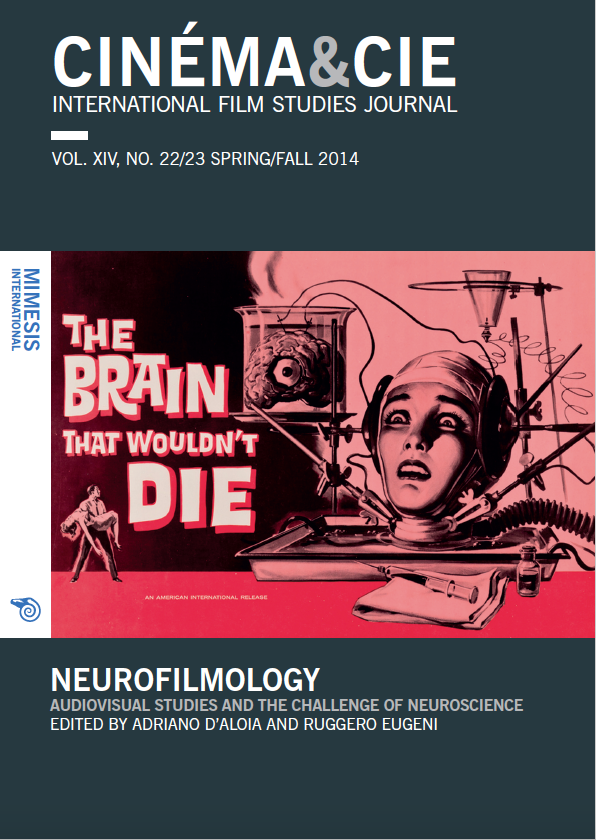Neurofilmology: An Introduction
Abstract
Over the last two decades, discoveries made in the field of cognitive neuroscience have begun to permeate the humanities and social sciences. In the context of this intersection, Neurofilmology is a research program that arises at the encounter between two models of viewer: the viewer-as-mind (deriving from a cognitive/analytical approach) and the viewer-as-body (typical of the phenomenological/continental approach). Accordingly, Neurofilmology focuses on the viewer-asorganism, by investigating with both empirical and speculative epistemological tools the subject of audiovisual experience, postulated as embodied, embedded, enacted, extended, emerging, affective, and relational. This introduction is divided into three parts. Firstly, it compares the classic filmological approach of the 1940s-50s with contemporary audiovisual media studies devoted to the analysis of viewer experience. Secondly, it outlines an epistemological and conceptual framework for the research: in this sense, it illustrates the theoretical model of the viewer-as-organism, and sketches a general outline of audiovisual experience that allows researchers to rearrange different kinds of research within a unitary framework. Thirdly, it briefly summarizes the contributions to the special issue.






